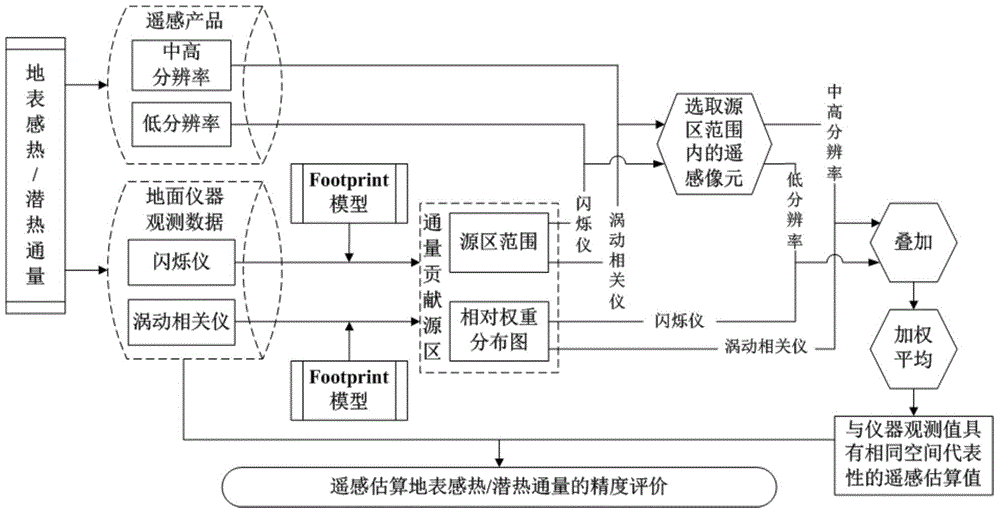Precision evaluation method and system for remote sensing estimation of surface sensible heat/latent heat flux
A latent heat flux and accuracy evaluation technology, applied in the direction of measuring heat, calorimeters, measuring devices, etc., can solve problems such as inaccurate verification results and mismatching spatial representation ranges
- Summary
- Abstract
- Description
- Claims
- Application Information
AI Technical Summary
Problems solved by technology
Method used
Image
Examples
Embodiment Construction
[0038] Ground-based observation instruments for sensible and latent heat fluxes at the surface are based on the principles of micrometeorology. The spatial range of surface fluxes observed by micrometeorological methods refers to the extent to which instrumental measurements can reflect the average or cumulative conditions of the actual surface, which can be characterized by footprints.
[0039] Footprint, also known as the source weight function, is a transfer function that describes the relationship between the spatial distribution of sources or sinks on the surface of the near-surface layer and the flux values observed by instruments, reflecting the range of instrument observations, and can be analyzed quantitatively or qualitatively Relationship between instrumental observations and surface forcing terms. Among them, the area that has the main contribution to the flux observation value is called the flux contribution source area.
[0040] The present invention provides ...
PUM
 Login to View More
Login to View More Abstract
Description
Claims
Application Information
 Login to View More
Login to View More - R&D
- Intellectual Property
- Life Sciences
- Materials
- Tech Scout
- Unparalleled Data Quality
- Higher Quality Content
- 60% Fewer Hallucinations
Browse by: Latest US Patents, China's latest patents, Technical Efficacy Thesaurus, Application Domain, Technology Topic, Popular Technical Reports.
© 2025 PatSnap. All rights reserved.Legal|Privacy policy|Modern Slavery Act Transparency Statement|Sitemap|About US| Contact US: help@patsnap.com



